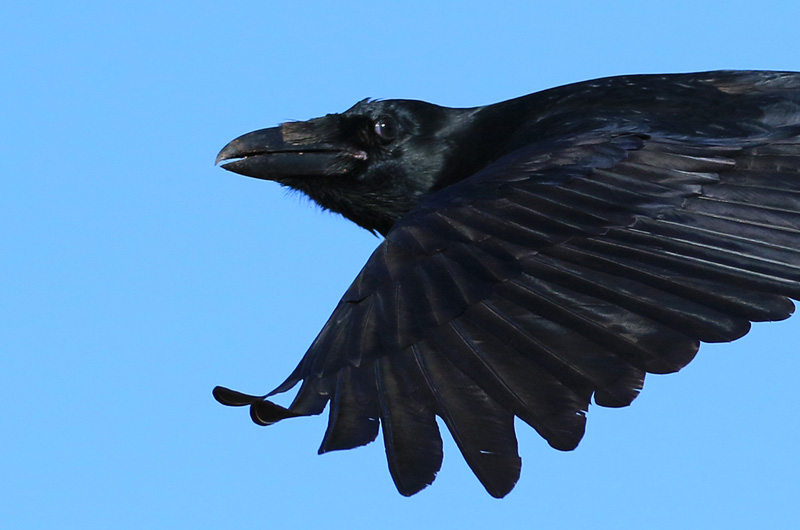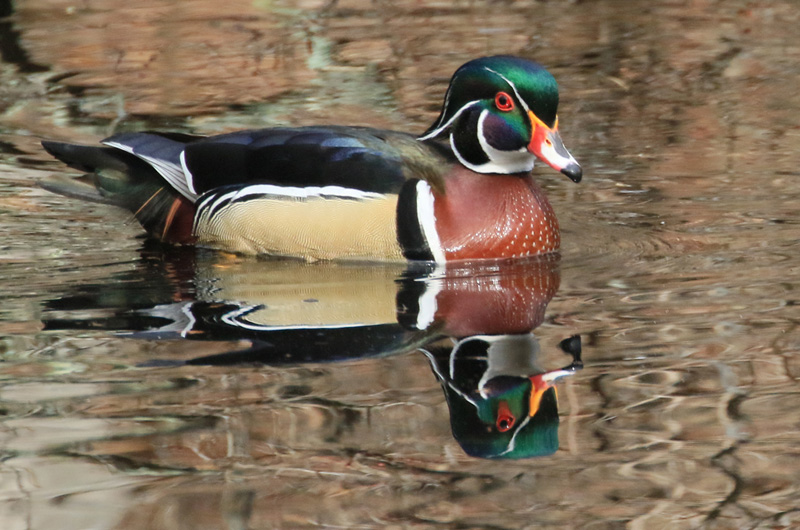The first tree swallows have returned. The first of these voracious mosquito and insect-eating birds usually return around March 21 and they are right on schedule. Polly Bassett saw a bunch of them at Felix Neck on March 21. Gus Ben David had a dozen checking out his nesting boxes on March 22 but they did not stay. On March 23, Lanny McDowell spotted one near the Tashmoo Overlook and Shea Fee found two at Long Point.
The other two new species for the year so far are both ducks. At the Oak Bluffs pumping station Margaret Curtin spotted a blue-winged teal mixed in with a flock of 21 red-breasted mergansers, 12 bufflehead, one common goldeneye and one double-crested cormorant. On March 27, Shea Fee found a male wood duck on Pocha Pond; two great egrets, a horned grebe and eight gannets were offshore.
Bob Shriber has found a new species for Aquinnah. On March 25 he observed a fish crow — the first one he has seen in that town. They have been seen in every other town and I observed nine in Ocean Park on March 26. Are these the birds that have nested in that town in previous years?
With the northward migration finally increasing the volume of migrants, it is now also breeding season. Owls are early breeders but other species do, too. Jeff Komarinetz found a woodcock nest with four eggs in it while he was mowing a field on March 27. The woodcock didn’t budge from its nest until the tractor was about eight feet away from it.
Of course we do not need to find a nest to know that a species is nesting. The only time birds carry vegetation is when they are building nests, so seeing this behavior confirms that the species is nesting nearby.
On March 25 David Padulo observed an American crow carrying nesting material in its beak at Sheriff’s Meadow Sanctuary. That day he also observed a common raven carrying nesting material over Vineyard Haven outer harbor, near Eastville Point Beach. On March 27, Gus Ben David and Phil Stanton observed a raven in its nest on the phone tower at the Verizon building. I noticed the same thing: the nest is also much bulkier than it was the week before and undoubtedly the pair is incubating eggs.
Most of the piping plovers that nest here have not yet returned but that does not prevent the intrepid males that are here. On March 27 I heard a male plover as it made a very short courtship flight at Little Beach. I then spotted the pair together, running around on the beach. They are getting ready to nest; can nest scrapes be far behind?
Gus Ben David reports that he has yet to see a female red-winged blackbird this year. Their arrival will announce the beginning of their nesting season. He also has yet to see his first brown-headed cowbird of the year, although some have been reported elsewhere around the Island. John Freedman spotted a male ring-necked pheasant along Moshup Trail on March 26; it will not be able to nest without a female.
Some species will depart our shores for points north in the next month or so. Snow geese nest in and near the Arctic but Shea Fee has seen a lingering snow goose at Pimpneymouse Farm since mid-March. Martha Moore reports a male ring-necked duck was still at Middle Point Cove on March 25. And I counted 176 brant at Ocean Park on March 24.
Shea Fee and David Padulo birded together on March 26 and found many of our winter resident seabirds. At Squibnocket they spotted horned grebe and three common loons as well as a flock of 35 lesser scaup on Squibnocket Pond. At Pilot’s Landing there were three horned grebes and seven purple sandpipers, while off the Gay Head cliffs there were 110 long-tailed ducks, one horned grebe, 20 razorbills and 10 red-throated loons. Bob Shriber added the overwintering greater yellowlegs at the West Basin on March 23.
Yellow-rumped warblers — formerly called myrtle warblers — are still around. Matt Pelikan, Nelson Smith, Gus BenDavid and Lisa Maxfield all report them at their feeders. Luanne Johnson found lots of them around Cranberry Acres.
Finally, Philip Tucker counted 36 mute swans in the southern end of Sengekontacket Pond on March 27. For some reason they tend together there every winter and spring. While that is a lot of swans, I recall that years ago there were flocks of 200 or more on the south shore ponds. This flock will break up soon as they become territorial in advance of their nesting season.
Please email your sightings to birds@mvgazette.com
Robert Culbert is an ecological consultant with Nature Watch LLC living in Vineyard Haven.











Comments
Comment policy »